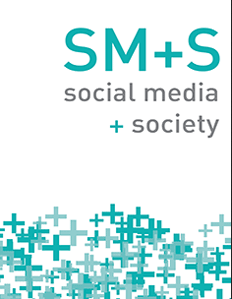解读社交媒体上的影响力:烟草促销背景下影响力账户检测指标的比较分析
IF 4.9
1区 文学
Q1 COMMUNICATION
引用次数: 0
摘要
2023 年,美国的影响者营销支出预计将超过 60 亿美元。这种营销策略对公共健康构成了威胁,因为研究表明,它已被用来削弱数十年来在公共健康方面取得的进步--例如在青少年吸烟问题上取得的成果。公共卫生和舆论研究人员需要实用的工具来捕捉社交媒体上有影响力的账户。利用 X(原 Twitter)的小雪茄和雪茄烟(LCC)数据,我们比较了七个有影响力的账户检测指标,以帮助我们澄清对现有指标功能和社交媒体上烟草产品讨论性质的理解。结果表明,现有的有影响力账户检测指标是非谐波和时间敏感的,能捕捉到截然不同的用户和不同类别的用户。我们的结果还显示,这些指标捕捉到的有影响力的社交媒体账户之间的对话截然不同。我们的研究结果表明,希望对有影响力的社交媒体账户进行分析的公共卫生和舆论研究人员需要了解每种指标的优点和局限性,并使用一种以上的有影响力账户检测指标,以提高产生有效、可靠研究结果的可能性。本文章由计算机程序翻译,如有差异,请以英文原文为准。
Deciphering Influence on Social Media: A Comparative Analysis of Influential Account Detection Metrics in the Context of Tobacco Promotion
Influencer marketing spending in the United States was expected to surpass $6 billion in 2023. This marketing tactic poses a public health threat, as research suggests it has been utilized to undercut decades of public health progress—such as gains made against tobacco use among adolescents. Public health and public opinion researchers need practical tools to capture influential accounts on social media. Utilizing X (formerly Twitter) little cigar and cigarillo (LCC) data, we compared seven influential account detection metrics to help clarify our understanding of the functions of existing metrics and the nature of social media discussion of tobacco products. Results indicate that existing influential account detection metrics are non-harmonic and time-sensitive, capturing distinctly different users and categorically different user types. Our results also reveal that these metrics capture distinctly different conversations among influential social media accounts. Our findings suggest that public health and public opinion researchers hoping to conduct analyses of influential social media accounts need to understand each metric’s benefits and limitations and utilize more than one influential account detection metric to increase the likelihood of producing valid and reliable research.
求助全文
通过发布文献求助,成功后即可免费获取论文全文。
去求助
来源期刊

Social Media + Society
COMMUNICATION-
CiteScore
9.20
自引率
3.80%
发文量
111
审稿时长
12 weeks
期刊介绍:
Social Media + Society is an open access, peer-reviewed scholarly journal that focuses on the socio-cultural, political, psychological, historical, economic, legal and policy dimensions of social media in societies past, contemporary and future. We publish interdisciplinary work that draws from the social sciences, humanities and computational social sciences, reaches out to the arts and natural sciences, and we endorse mixed methods and methodologies. The journal is open to a diversity of theoretic paradigms and methodologies. The editorial vision of Social Media + Society draws inspiration from research on social media to outline a field of study poised to reflexively grow as social technologies evolve. We foster the open access of sharing of research on the social properties of media, as they manifest themselves through the uses people make of networked platforms past and present, digital and non. The journal presents a collaborative, open, and shared space, dedicated exclusively to the study of social media and their implications for societies. It facilitates state-of-the-art research on cutting-edge trends and allows scholars to focus and track trends specific to this field of study.
 求助内容:
求助内容: 应助结果提醒方式:
应助结果提醒方式:


